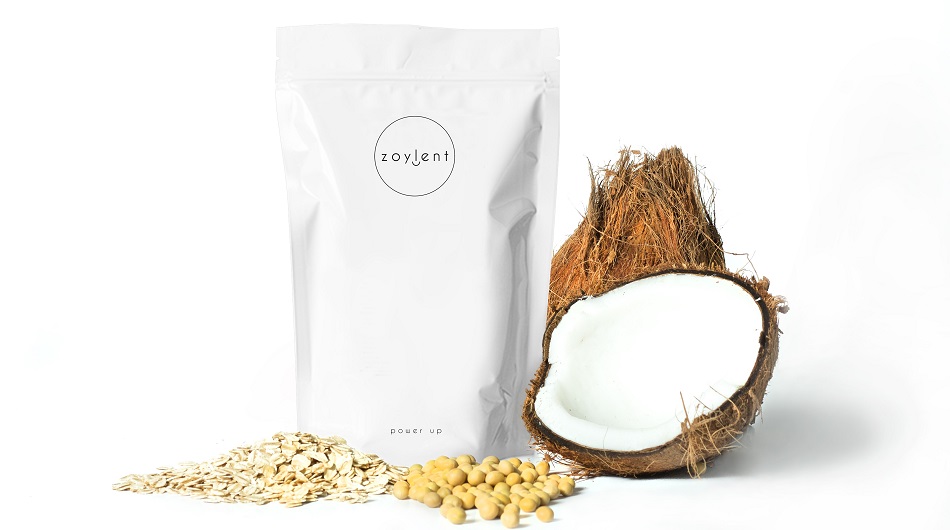
Photo credit: Zoylent.
If you have any interest in Silicon Valley goings-on (I mean, you’re reading this site, so there’s a good chance you do), you’ve probably heard of Soylent. The brainchild of entrepreneur Rob Rhinehart, it set out to replace normal food with nutrient-rich beverage.
While it’s technically possible to order Soylent in Singapore, it’s a hassle. The US startup only ships to its native country and Canada at the moment. But alternative sustenance fans here have a, well, alternative option: one Singaporean entrepreneur decided to make and sell his own version.
Enter Zoylent.
The name sounds take-you-to-court similar but there are plenty of competing products out there already like Schmoylent (which, to be fair, has since rebranded to Schmilk – I swear I’m not making these up) and Joylent, a European alternative.
It’s also in keeping with the “open source” nature of Soylent. The startup’s community has played with the recipe and created several variations of the original.
This is how Alvin Chong came up with Zoylent. “I first heard about Soylent when it came out and wondered why no one had thought of this earlier. Reading about how people started adopting it, I just wanted to make it for myself,” he tells Tech in Asia.
Alternative food
For those who don’t know, Soylent is basically powder you dissolve in water, producing a drink that’s meant to replace an entire meal. Classified as food by the US Food and Drug Administration, it’s made out of “all of the elements of a healthy diet, with limited contribution from less desirable components such as sugars, saturated fats, or cholesterol.”
Despite misgivings, bizarre experiments, and a name that brings to mind the 1973 Charlton Heston-starrer Soylent Green, Soylent has attracted US$22.3 million from investors including an enthusiastic Andreessen-Horowitz. Its founder claims the company has grown 300 percent in 2015.
And it’s far from alone. Intervening years have seen products with equally unsettling names, like Huel (short for “human fuel”) from the UK and Ambronite from Finland, trying to carve out their own niche in the alternative food market.
Food versus time
Alvin had always known he wanted to work for himself rather than going through the salary gauntlet. “You can never get rich working at a job,” he says. “Working for someone else, you function at less than half of your capacity.”
He’s tried out several business ideas, including selling rollerblade parts when he was 18 and being one of the first people to sell the popular Japanese kendama toys in Singapore.
I found I could use Zoylent to skip lunch.
Much like Rob, Alvin started experimenting with Zoylent because he felt he needed a way to get food quickly while juggling a busy work schedule. “Working hours in Singapore are crazy,” he says. “People here wake up before the sun rises and get home after it sets – many of them don’t have time to have breakfast.”
A couple of spoonfuls of Zoylent in a glass of water are supposed to give you about 500 calories’ worth of a meal. Technically, it could replace most of the day’s meals without leaving you hungry.
For help with getting the recipe right, Alvin got a hold of a food technologist whose full-time gig is with a food company in Singapore (he did not disclose the person or the company). The end result is quite similar to Soylent, although Alvin has made some additions like coconut flour to make it more palatable.
“As people incorporate Zoylent into their lifestyle, taste is very much an important factor,” he says.

A glass of Zoylent. Photo credit: Tech in Asia.
Like its US cousin, Zoylent is considered food by the Agri-Food & Veterinary Authority of Singapore, since it contains ingredients that can be found on a supermarket shelf. “As long as you comply with all the guidelines on the website, there’s no special regulations one has to go through,” Alvin explains.
I’m hardly an expert on how Soylent tastes but word is, it’s not great. Zoylent, on the other hand, isn’t bad at all – Alvin’s tinkering has worked in that regard. The version I tried was vanilla-flavored and that went a long way toward making it appealing.
As for how full it makes you? While I didn’t try to sustain myself for days on end with just Zoylent, I found I could use it to, say, skip lunch. Other than maybe a few more trips to the men’s room (it is a liquid after all), there was nothing out of the ordinary. Alvin does point out you might notice some increased um, bowel activity if you’re not used to a fiber-rich diet.
But is it good for you?
There’s currently little, if any, scientific consensus on products like Soylent (and by extension, Zoylent) and how good or bad they are for you. But experts seem to agree they’re not the end-all, be-all solution for healthy food Rob initially promised.
I asked a nutrition expert about this and, sure enough, he was sceptical. “The ingredients are fine but this formulation can’t serve as a balanced diet on its own,” Dr. Faidon Magkos, assistant professor at the National University of Singapore, told me.
For example, both Soylent and Zoylent use soy for protein, which isn’t the best protein source in terms of bioavailability and quality, he added.
The good news is, Alvin doesn’t think of Zoylent as this drastic lifestyle paradigm shift either. “The main aim of Zoylent is to fulfill your nutritional needs when you have what I call an ‘obligatory meal’ – [something] you consume only because you need energy,” he explains. The idea is that if you need a pick-me-up at lunchtime you have to spend time and money to get it – a glass of Zoylent is supposed to save you both.

Zoylent founder Alvin Chong. Photo credit: Zoylent.
Rob himself has somewhat walked back on the single food promise, telling Bloomberg, “You could live on Soylent if you had to, but that’s not the application we’re trying to sell at all. But it’s a salacious, easy story that we’re trying to drastically change people’s behavior, or do something against how people would want to live.”
Going hungry
There’s a lot to be said about convenience, but is it something people would want? That’s the bet Alvin is trying to make. He plans to crowdfund an initial batch to gauge demand and take it from there. So far he’s been putting his own savings into the idea.
One major challenge would be the local food mindset. Singapore and Asia in general are home to cultures that enjoy their food as an experience and a social activity. One look at your average food court in Singapore at lunchtime is enough to give you an idea of how people feel about grabbing some grub together.
Alvin doesn’t think of Zoylent as a drastic lifestyle paradigm shift.
Meanwhile, on the other side of the Pacific, its counterpart is used in Soylent-only dinner parties, which couldn’t be more San Francisco if it came with its own Golden Gate Bridge.
“Mealtimes are very much a social activity as much as a basic necessity – we not only fill our bellies but our minds and hearts as we socialize with friends and family,” Alvin offers when I ask him about that. “Zoylent wants to save the user time and money so they can eat out at the restaurants they want, with the people they want to be with.”
The other challenge Alvin has to face is the product’s open-source nature, which would allow anyone with the time and inclination to make their own version of it instead of buying Zoylent. Alvin doesn’t see this as a problem, however.
“It’s a bit of a cliché but I’d like to think of Zoylent as a life hack – it’s literally modifying your lifestyle to save time,” he says. “In that spirit we encourage users to experiment as much as they want with our product and on their own.”
This post This Singaporean entrepreneur made his own food alternative based on Soylent appeared first on Tech in Asia.
from Tech in Asia https://www.techinasia.com/zoylent-singaporean-soylent
via IFTTT
No comments:
Post a Comment